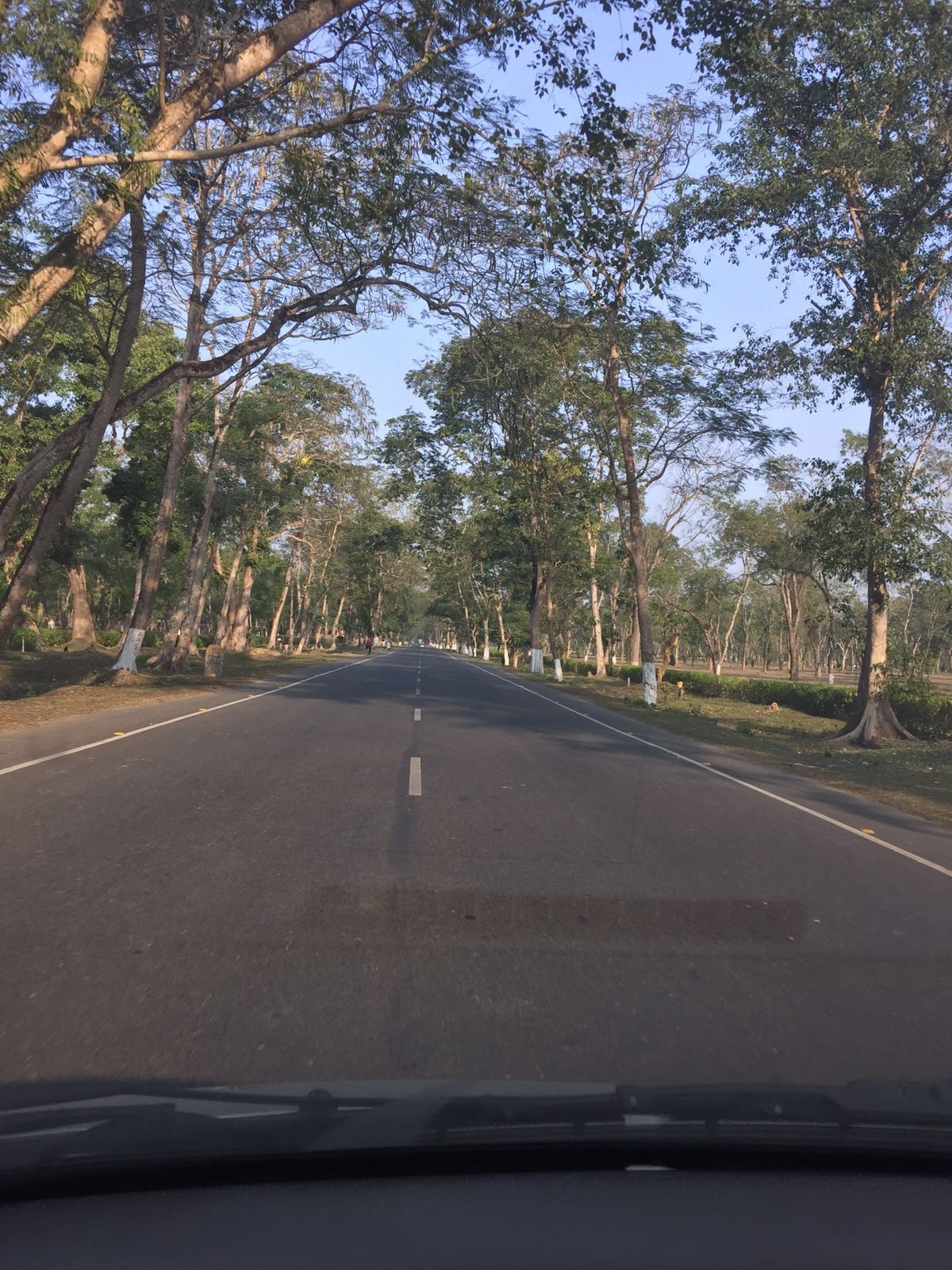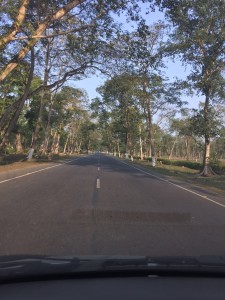
The man on the highway
 The man lay crumpled on the highway, wearing a brown jacket and dark trousers. A checked handkerchief was next to his knee and he looked as if he was sleeping. Was he drunk? I wondered. in my mind, that moment remains frozen in time. We had just passed Amoni on the national highway between Nogaon and Guwahati on a crisp January morning. I can still imagine it vividly: the ‘line’ bus waiting on the right side of the road. A few white Tata mini-trucks on the left, at the top of a lane that went into the countryside. And a couple of men had started to move as the vehicle in which I was traveling sped by.
The man lay crumpled on the highway, wearing a brown jacket and dark trousers. A checked handkerchief was next to his knee and he looked as if he was sleeping. Was he drunk? I wondered. in my mind, that moment remains frozen in time. We had just passed Amoni on the national highway between Nogaon and Guwahati on a crisp January morning. I can still imagine it vividly: the ‘line’ bus waiting on the right side of the road. A few white Tata mini-trucks on the left, at the top of a lane that went into the countryside. And a couple of men had started to move as the vehicle in which I was traveling sped by.
I had looked up after sending off an SMS where this scene appeared before me. What had happened? I asked the driver. There’s been an accident, he said. But what and where? I couldn’t see any other vehicle and felt terrible for having thought that the accident victim had been drunk. But where was the maut ka saudagar?
The driver then told the story: the man had got off the bus and was walking across the road when a speeding motorbike with two men on it came screaming down the highway. The bike hit the man, who collapsed on the spot, careened off the road to the right and fell into a ditch with both riders. Neither man was wearing a helmet.
All this happened in the flash of a few seconds between the time I had my head down writing a brief SMS, sending it and then looking up to see the man sprawled on the ground. The driver said the victim had been ambling across the road without looking either side. The suddenness and finality of the event shook me. But forget who was to blame. It was not till much later than I got my swirl of thoughts under some control. That’s when the obvious question confronted me: why hadn’t I thought of calling 108, the emergency service? This was especially painful since I work in the health sector in Assam, an organization I founded (www.c-nes.org) helps run a boat clinic initiative over 13 districts that reaches three lakh people with regular health care, battling the deadly twins of high Maternal Mortality Ratio and Infant Mortality Ratio on the islands of the Brahmaputra.
Yet, as a first responder, I was a total failure. How many of us react in this manner? Was I more intent on reaching my destination and getting to my meetings? I have thought about this and have come to the conclusion that this was not the case. It was a matter of not being focused on what should be done and not going over what happened and the possible scenarios as they played out.
I recalled researching the scale of accidents in Assam a few years ago and was appalled at the number of incidents. That was before the four-lane highway between Guwahati and Nogaon and beyond became fully operational. This is what is touted as the AH 1 (Asian Highway 1) that is part of the Look East/Act East Policy of the past and present Central governments. New money means new vehicles, both the two-wheel and the four-wheel kind, of Indian make and international. Young people especially are getting a thrill out of speeding on city roads and highways, revving their engines and racing as if they were living a scene out of The Fast and the Furious or as if there was no tomorrow.
For some, there isn’t.
What’s needed are more rapid responders on land, more 108s at the ready in highway patches which are known to been especially dangerous. But apart from that, we have to embrace safety as a first principle – for ourselves and for each other. Thus, every rider of a motorized two-wheel vehicle should wear a helmet. It’s a law. It’s also about self-protection. We need highway patrols, hiding behind frees or in gullies next to the highway, to chase down those who are not. Insist on seat belts.
When I’m traveling in Assam and the North-east, I make it a point to tell those who drive cars or who are in the front passenger’s seat to put their seat belts on, if they haven’t done so within minutes of boarding the vehicle. Most drivers are smart and follow the law because they know what would happen if they were caught breaking traffic rules: they could lose their licenses or be forced to pay a fat fine or a large bribe or all of these. I find this is true across India and am glad to see some positive changes in driving attitudes in our region as well.
But to save lives on the highways we need to go much further.
A few years ago, a news report on the busiest highway in Assam and arguably of the region, said that not less than 5,742 persons were killed in 11,000 accidents in 10 years. Or more than 500 persons per year.
Around the same time, the then state transport minister Chandan Brahma said in a statement that “drunken driven, road conditions, haphazard parking of vehicles on the road, violation of traffic rules, overloading of vehicles, lack of awareness among pedestrians, lack of zebra crossings and mechanical failure” were some of the “main reasons” for the accident. He hardly left out any factor behind an accident.
Buses and trucks drive at breakneck speed, challenging and racing each other; smaller vehicles are no less; some get smashed trying to stay out of the mayhem. The super highway coming up by the side of the old road has marked the price of its creation from time to time: it wounds me to see the stumps of hundreds of magnificent old flowering Krishna sura, groves of banana, areca nut and bamboo trees, piled up by the side of the road, lying mutely in their destruction. No one seems bothered. That’s what really hurts.
At a time when global warming is one of the greatest challenges facing our planet, here we are going about destroying the resources that protect our earth and our own patch of it. Every state is developing a Climate Change Action, Mitigation and Adaptation plan. Surely, growing more trees is part of the strategy, not destroying the resources we have.
All of us are familiar with the counter-argument – it’s a price we pay for development. I don’t think so. I think that we can manage pretty well and connect to each other, to the rest of India and to South-east Asia with well built and well-maintained two lane highways in the hills and the existing four-lanes in the plains areas of Assam. The promise that Atal Bihari Vajpayee made over a decade ago to build four-lane highways in the hills overlooked one thing: the Patkai hills and the Eastern Himalaya are not the hills and vales of Europe and England. They are much more fragile.
Apart from that, we should not forget that roads and other infrastructure in our largest eastern neighbor, Myanmar, are far worse than in our own region. So where will our four-lanes, when built, lead us, if there isn’t seamless asymmetry across the border? It would save huge financial investment, reduce the harm to our forests and green cover and improve life on our planet, even a little.
By the Brahmaputra / Sanjoy Hazarika